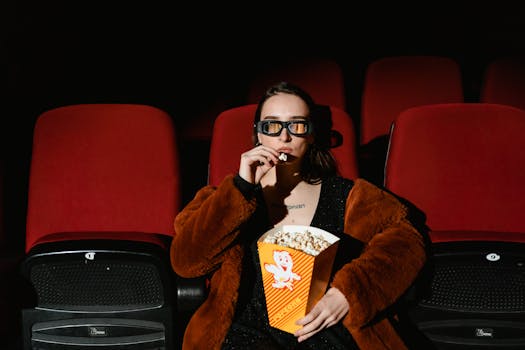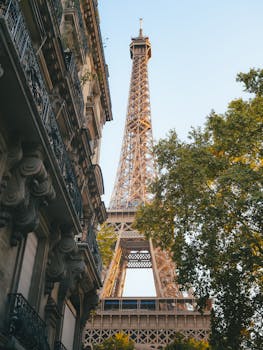Movies
How Real Locations Transform Movie Storytelling
Discover how movie locations add realism and emotional depth to films. Learn why directors choose real-world settings and see how authenticity transforms cinematic storytelling on screen.
Advertisement
It’s one thing to imagine a cinematic world, but stepping into the streets, rooms, and landscapes where a story unfolds sparks authentic emotion. When directors integrate movie locations, they create richer, more believable films that immerse viewers from the outset.
Audiences might not initially realize it, but the very places where movie scenes take place shape characters’ moods and viewers’ expectations. Using tangible, recognizable movie locations helps filmmakers craft stories with genuine grounding and visual texture.
As we journey through iconic settings and production decisions, this article reveals why real spaces leave lasting marks on films. Discover how choosing movie locations can elevate storytelling, deepen authenticity, and inspire immersion throughout your cinematic experience.
Creating Authenticity Through Real-World Backdrops
When filmmakers select real-world movie locations, the authenticity leaps on screen. Actors interact with their environment, yielding subtle performances that green screens just can’t produce.
Directors deliberately scout locations, sometimes spending weeks searching for the perfect street or building. The right choice can anchor a story, making the film’s world feel truly lived-in.
Spontaneous Reactions Ground Performances
Stepping onto unfamiliar movie locations prompts real reactions from actors. For instance, a performer exiting a real taxi into Times Square responds to actual sights, sounds, and even the scent of street food vendors nearby.
This natural engagement becomes visible: their body language and facial expressions shift in ways only a genuine place can evoke. Such organic responses make each moment more believable for the audience, creating a deeper connection.
Directors have actors walk down city blocks, pausing when needed to soak in their surroundings. These micro-adjustments happen instinctively, resulting in scenes with richer emotional undertones and memorable character dynamics.
Sensory Immersion Fuels Story Impact
Movie locations provide a tapestry of sensory cues—weather, ambient noise, surface textures—that constructed sets rarely match. Consider a rainy alley: actors dodge puddles, real rain chills the skin, and umbrellas jostle in the frame.
All these tactile sensations inform performances and cinematography. The story feels less staged, drawing viewers into a world that feels as varied and unpredictable as their own lives. That resonance lingers long after the film ends.
When directors embrace these lived-in settings, subtle background events—passing strangers or an unexpected siren—can enrich the narrative. The unplanned moments aren’t distractions; they’re a reminder of life’s unpredictability woven into cinematic storytelling.
| Production Choice | What Changes | Benefits | What To Do Next |
|---|---|---|---|
| Real City Streets | Authentic movement, live crowds | Natural energy, recognizability | Scout neighborhoods; consider rush hour impact |
| Actual Homes | Personal details, aged materials | Believable décor, organic blocking | Inspect floor plans for camera setups |
| Historical Landmarks | Architectural depth, specific era | Evocative mood, historical texture | Secure filming permits, research busy hours |
| Natural Landscapes | Seasonal changes, shifting light | Dynamic visuals, atmospheric storytelling | Plan for weather; pack backup gear |
| Working Businesses | Crowded interiors, live sounds | Genuine interactions, observable realism | Coordinate schedules, brief participants |
Anchoring Narrative Believability With Geographic Accuracy
Sticking to real movie locations grounds a film’s plot in truth. Real streets, shops, and landmarks anchor the story, allowing audiences to invest in characters’ journeys as possible realities.
Production teams map out scenes, ensuring narrative flow aligns with real geography. Even the distance between two sites can influence the tension and pacing within the script.
Strengthening Plot Through Mapped Locations
Directors use location scouting as practical research. Walking the path a character would take uncovers timing issues—maybe a supposed five-minute walk takes twenty. Scenes are rewritten for accuracy.
This precision doesn’t just avoid plot holes; it actively shapes character development. A trek across a sprawling city, for example, shows fatigue or urgency not present on a studio set.
- Visit the route in person: Noting landmarks and time helps ensure scenes flow logically and maintain credibility for viewers who know the area.
- Photograph waypoints: Sharing images with the creative team aligns visual reference and narrative beats, especially when distance or elevation matter for the plot.
- Incorporate real-time changes: Noting seasonal decorations, construction, or event signage enhances realism and connects the movie to a specific cultural moment.
- Check public access times: Avoid scheduling crucial shooting on days when sites are closed or packed, maintaining control and quality during production.
- Gather sound samples: Recording ambient noises on-site lets sound editors recreate an authentic audio landscape matched to the visuals.
Shooting with real distances and city patterns in mind, movies showcase unforced pacing—reflecting how people really move and interact with their environments.
Movie Locations as Character in the Story
Iconic films make movie locations as unforgettable as actors. The Overlook Hotel defines “The Shining,” just as the looming metropolis shapes “Blade Runner.” Every exterior detail adds subtext and mood.
- Focus on memorable architecture: Choose buildings or neighborhoods with a visual personality to reflect the story’s underlying themes and character experiences.
- Showcase local culture: Incorporate background extras, signage, and language authentically—capturing the spirit and diversity of the location.
- Lean into atmospheric weather: Allow sunlight, fog, or rain to color the narrative, symbolizing turning points or emotional shifts throughout the plot.
- Use geography in framing: Reveal cityscapes, rivers, or mountains at story-critical moments, tying the protagonist’s journey to the landscape’s size and texture.
- Include recurring location shots: Revisit the same park or street at different times, reinforcing its thematic significance for both the characters and the audience.
When the location itself feels like another character, viewers recall both the visual impact and the emotional resonance long after the credits roll.
Evoking Emotional Responses With Local Flavor and Detail
Real-world settings, from bustling bazaars to empty rural roads, supply emotional nuance through atmosphere and detail—allowing movie locations to inspire feelings beyond the script.
Unlocking Feelings Through Authentic Backdrops
Rich, recognizable spaces amplify the impact of a scene. A breakup in a crowded subway feels different than one in a sunlit park. Subtle elements—wall graffiti, distant laughter—anchor mood.
Filmmakers cue emotions with props naturally found on site—wilted flowers on a stoop or flickering neon signs. These visuals spark audience empathy, rooting the moment in relatable memories.
Directors can request, “Pause by that mural, let it fill the frame,” encouraging actors to embrace their setting. Such precise directions generate distinct atmosphere, giving scenes emotional depth unique to movie locations.
Constructing Realistic Rituals and Community
Movie locations help filmmakers depict community traditions—like morning coffee at a local diner or market-day crowds in villages. Audiences recognize these behaviors, feeling a connection to both the place and its stories.
Shooting in a lived-in, recognizable shop or park enables actors to follow genuine daily rhythms. Customers chat, traffic hums, clocks tick—all planting the fiction securely in the real world.
The result is a tapestry of interactions: a barista remembers a customer’s order; old friends wave from across the street. These tiny, everyday rituals build trusting relationships between the story’s world and the viewer.
Challenging Filmmakers to Adapt and Innovate on Location
Shooting in real spaces requires teams to react to changing environments, which ultimately sharpens creativity and problem-solving skills among cast and crew.
Managing Unexpected Twists as Creative Fuel
Noisy construction across the street, fleeting clouds, or a surprise parade can disrupt a tightly scheduled shoot. Directors who embrace these challenges capture spontaneous moments unseen in a closed set.
A crew member might say, “Let’s try capturing this crowd,” prompting an impromptu shot that energizes the scene. Adaptation ensures each day’s footage stays fresh and full of possibility.
Sometimes, these surprises even change the story. A sudden rainstorm, for example, might inspire a new sequence or dialogue, adding authenticity and emotional tension to the film.
Collaborating With Locals For Deeper Results
Producers often enlist residents or local experts to guide scenes and logistics. Their expertise—on everything from area history to traffic patterns—enriches both storytelling and production efficiency.
Small, collaborative gestures, like a restaurant owner offering after-hours access, enable more flexible shooting. Local extras bring spontaneity and unfiltered reactions, leading to more candid, dynamic scenes.
These community relationships last beyond the film, ensuring filmmakers treat locations with care and respect. The result is a movie grounded in lived experience, fostering genuine pride among locals and viewers alike.
Real Locations Ignite Lasting Impressions In Cinematic Storytelling
Throughout the filmmaking process, real movie locations create tangible worlds full of texture, spontaneity, and genuine feeling. Their impact runs deeper than any digital recreation could hope to achieve.
Each real backdrop grounds the narrative and shapes on-screen relationships, giving viewers something to hold onto—visually and emotionally—across every frame. These places ensure the story lingers long after the lights come up.
Choosing real settings for cinematic journeys doesn’t just authenticate a story. It deepens the artistry of filmmaking, offering a roadmap for creative teams—and audiences eager for movie locations that feel true to life.
Trending Topics

The Most Memorable Cinematic Villains of All Time
Relive unforgettable cinematic villains whose motives, charm, and darkness made them iconic in every era of film history.
Keep ReadingYou may also like

Hidden Movie Endings That Completely Change the Story
Discover hidden movie endings that completely shift meaning, twist expectations, and make audiences rethink the story’s truth.
Keep Reading


